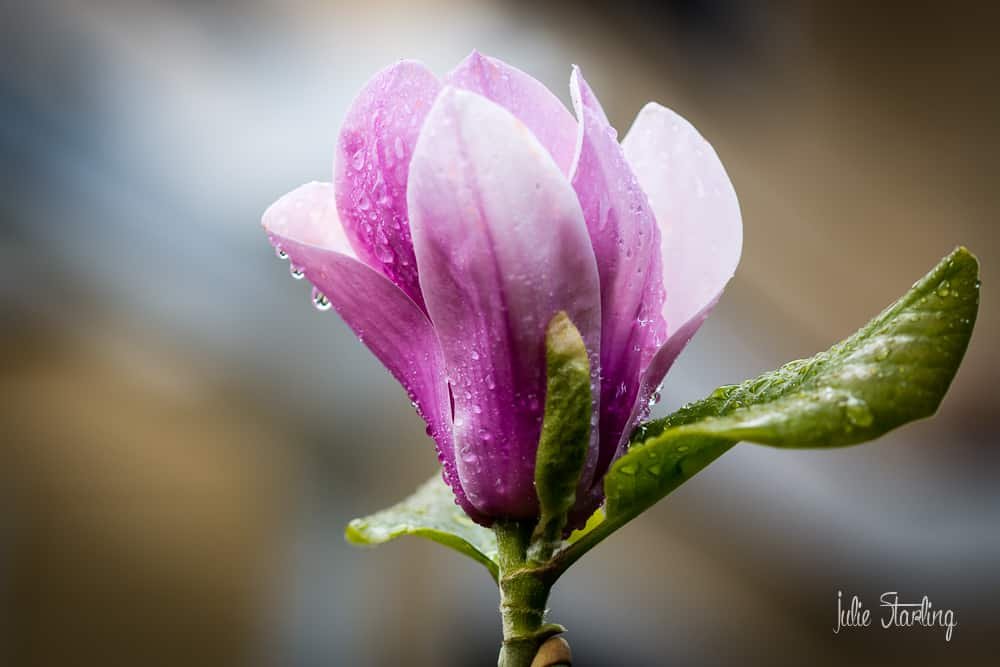Our Saucer Magnolias are in bloom. It’s hard not to smile a mile wide when you see a magnolia in bloom. Downtown, most trees are in full bloom, while ours up in the mountains are still opening. The history of the ancient species magnolia is as fascinating as it is beautiful. Fossilized specimens date back 20 million years ago, and other plants belonging to the family date back to 95 million years ago. I can’t even wrap my head around this.
Magnolias appeared before bees and thus evolved to encourage pollination by beetles. The leaves are extremely tough to withstand the damage from beetles. They do not produce nectar but produce large quantities of pollen, high in protein for beetles to use for food. The flowers are protogynous: the flower opens with female parts first, then closes and reopens with the male parts (stamens) ready to shed pollen. This adaptation increases likelihood of cross-pollination, rather than self-pollination and widens the gene pool. Magnolias produce cone-like fruit in reddish-brown, containing red seeds that mature in autumn. The seeds are a favorite food for song birds and great for migrating birds as the seed is high in fat providing an excellent source of energy for a long flight.
There are around 210 species of magnolia, this one is the Saucer Magnolia, created by crossing the lily magnolia (Magnolia liliflora) and the Yulan magnolia (Magnolia denudata). These are super hardy trees that have survived millions of years and various climate changes. Even my brown thumb can't kill a magnolia!
